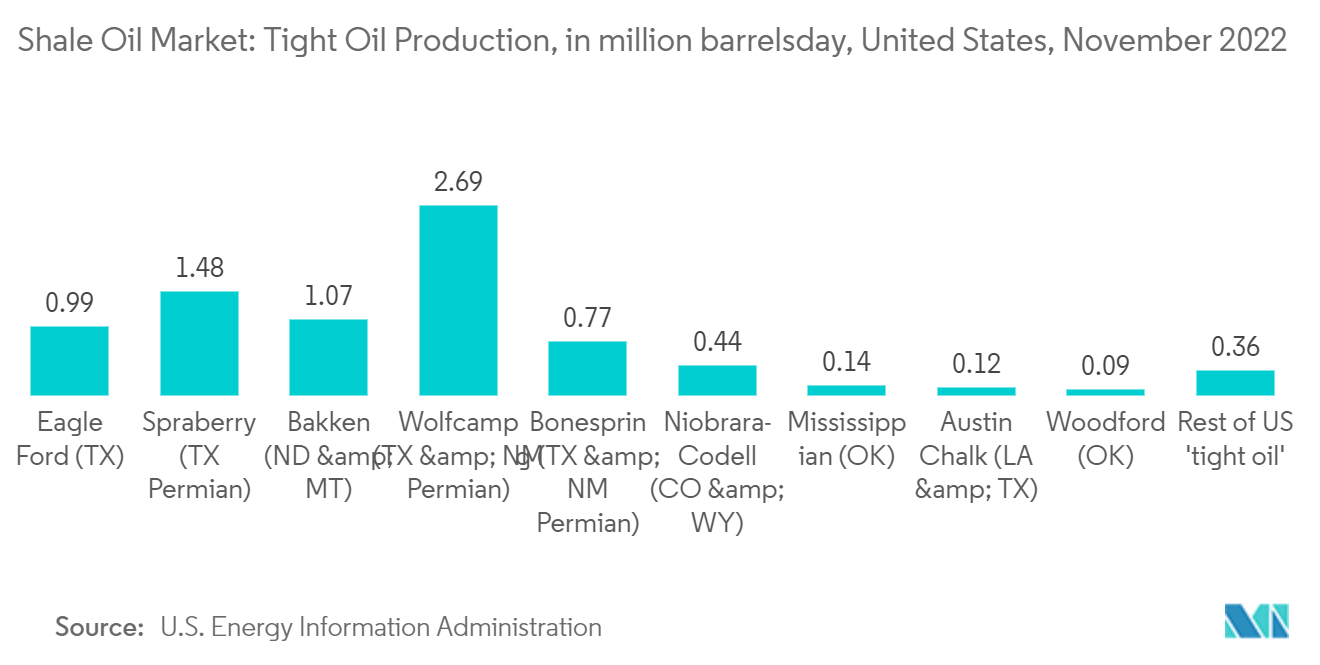Market Trends of Shale Oil Industry
This section covers the major market trends shaping the Shale Oil Market according to our research experts:
Growing Petrochemical Industry to Drive the Market
- Many countries have large reserves of shale oil deposits, which may be used to decrease their dependency on imports of oil to suffice the needs of the petrochemical industry in the country. This aids the growth of the shale oil industry in the nation by providing an incentive to invest in shale oil production.
- Moreover, the share of shale oil in transportation and power generation has been reducing due to better and cleaner alternatives replacing it in the market. However, it is the most important chemical in the petrochemical segment, without which synthesizing the required compounds would be much difficult.
- The global petrochemical demand has recovered significantly since the Covid-19 pandemic has receded, and as demand has increased, combined with the economic fallout of the Russia-Ukraine war, global petrochemical prices have shot up. As of June 2022, the price of ethylene, one of the most widely used petrochemicals, stood at 1235 USD/metric tonnes, up by nearly 90% since 2020 and 15% since 2017.
- Several world-scale projects are currently following a path of configuring a refinery to produce maximum volumes of chemicals instead of transportation fuels as in a conventional refinery.
- In December 2022, Saudi Aramco and TotalEnergies have completed the Final Investment Decision (FID) to advance construction of a proposed grassroots petrochemical complex in Satorp, which will be integrated with existing 440 thousand barrel/day capacity Jubail refinery. Both of the companies will invest a total of about USD 11 billion-USD 4 billion of which will be funded through equity by Aramco (62.5%) and TotalEnergies (37.5%).
- The petrochemical industry is expected to increase significantly in the forecast period due to increasing uses of petrochemical products, the introduction of innovative processes like direct crude cracking, and increasing investments into the sector are expected to grow the market. Growth in the petrochemical industry is expected to increase the consumption of shale oil, thereby aiding the growth of the shale oil market.

North America to Dominate the Market
- The United States is the world's largest shale gas producer, and despite the Covid-19 pandemic which decimated global hydrocarbon demand forcing fracking crews to suspend operations, the market has been recovering.
- As the United States has one of the lowest costs of fracking globally, most investors are attracted to invest in the sector, thereby driving the growth of the sector during the forecast period. According to the United States EIA, nearly 95% of all wells drilled in the United States are fracked.
- As of November 2022, the Wolfcamp shale in Permian Basin in Texas and New Mexico, was the largest shale oil producing shale play in the country, producing nearly 33% of all of the shale oil production in the United States during November 2022, while the Spraberry shale in the Permian Basin was the second-largest play in the country, producing nearly 18% of the country's total shale oil production.
- The United States has massive shale reserves concentrated across the country, the biggest of which include Permian basin, Eagle Ford, Marcellus, Niobrara, Barnett, Haynesville, Bakken and Anadarko-Woodford shale plays. The Permian Shale play in West Texas is one of the largest shale plays globally, with the lowest shale development costs.
- Canada's also has significant shale reserves in the Monterney-Duvernay shale plays in Alberta, and due to the geographic proximity to the United States, has used the locally avaialble technical expertise to kickstart the development of its domestic shale reserves.
- Hence, North America is expected to dominate the market due to the overwhelming production of shale on the continent and further increase in the investment in the sector.


